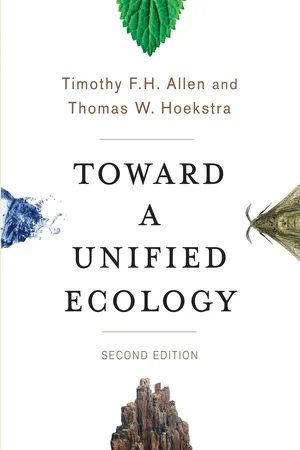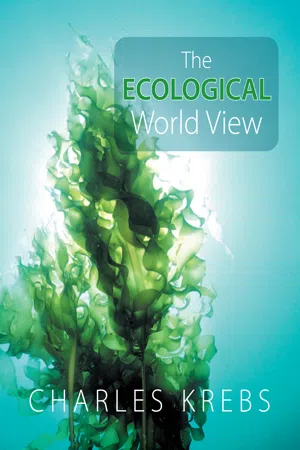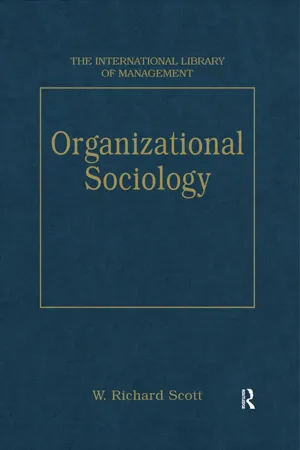Biological Sciences
Populations
Populations refer to groups of organisms of the same species that live in the same area and interact with one another. In biological sciences, the study of populations involves examining their size, density, distribution, and genetic composition, as well as the factors that influence these characteristics. Understanding populations is crucial for ecological and evolutionary research, conservation efforts, and management of natural resources.
Written by Perlego with AI-assistance
Related key terms
5 Key excerpts on "Populations"
- eBook - ePub
- Laurie Ann Callihan(Author)
- 2013(Publication Date)
- Research & Education Association(Publisher)
CHAPTER 7 Population Biology CHAPTER 7 POPULATION BIOLOGY ECOLOGYEcology is the study of how organisms interact with other organisms and how they influence or are influenced by their physical environment . The word “ecology” is derived from the Greek term oikos (meaning “home” or “place to live”) and ology (meaning “the study of ”), so ecology is a study of organisms in their home. This study has revealed a number of patterns and principles that help us understand how organisms relate to their environment. First, however, it is important to grasp some basic vocabulary used in ecology.The study of ecology centers on the ecosystem. An ecosystem is a group of Populations found within a given locality, including the abiotic environment around those Populations. A population is the total number of a single species of organism found in a given ecosystem. Typically, there are many Populations of different species within a particular ecosystem. The term organism refers to an individual of a particular species. Each species is a distinct group of individuals that are able to interbreed (mate), producing viable offspring. Although species are defined by their ability to reproduce, they are usually described by their morphology (their anatomical features).Populations that interact with each other in a particular ecosystem are collectively termed a community . For instance, a temperate forest community includes pine trees, oaks, shrubs, lichen, mosses, ferns, squirrels, deer, insects, owls, bacteria, fungi, etc.The part of the Earth that includes all living things is called the biosphere . The biosphere also includes the atmosphere (air), the lithosphere (ground), and the hydrosphere (water).A habitat refers to the physical place where a species lives. A species’ habitat must include all the factors that will support its life and reproduction. These factors may be biotic (i.e., living—food source, predators, etc.) and abiotic - eBook - ePub
- Timothy Allen, Thomas Hoekstra(Authors)
- 2015(Publication Date)
- Columbia University Press(Publisher)
6 THE POPULATION CRITERIONA. D. Bradshaw (1987) had seen it all, and we hope that the complexity science of which we are proponents is not subject to his critique. But what he says does ring true with regard to population biology:Once we spent a lot of time looking at the behaviour of species, then ecosystems became important. Now, nearly any ecologist who feels he must be respectable will work on Populations. Although an historian may be able to see a proximal cause for what happens—the arguments of a persuasive scientist or a novel and interesting discovery—the ultimate causes may be little other than those which give the world its flourishing fashion industry.1An ecological population is a collection of items, usually organisms that are in some way equivalent. The equivalence may come in the population members being of the same species. Even so, there are many Populations where members, while still equivalent, are from different species. For instance, the winter flocks of black birds in Wisconsin are not blackbirds, they are birds that appear black, coming from different species. Sometimes being from the same species is insufficient for population membership. In epidemiology, there are at least three Populations within the species: the infected, the susceptibles not yet infected, and the immune who have recovered from the infection. So the equivalence that makes for a population is specific for the purpose of conceiving that population. There is one central assumption in population biology with regard to population members, that is, “when you have seen one, you have seen them all.” This is, of course, a relative statement, but if you cannot say it, you simply cannot do population biology. Sufficient equivalence is what allows population equations. It makes the individuals summed to give N in a population sufficiently similar so that they are additive. If you cannot say that when you have seen one you have seen them all, you cannot compute N. - eBook - ePub
- Charles Krebs(Author)
- 2008(Publication Date)
- CSIRO PUBLISHING(Publisher)
. Individuals in a local population have a common gene pool and have the potential to breed with one another. Consequently, the mule deer of Montana would not constitute a local population because deer from eastern Montana would never be able to breed with deer from the western part of the state—the two groups are isolated by distance. The boundaries of a population both in space and in time are not precise and in practice are usually fixed somewhat arbitrarily by the investigator.Although a population is composed of individuals, it has group characteristics, which are statistical measures that cannot be applied to individuals. The basic characteristic of a population that we are often interested in is its density . We can also measure the reproductive rate (the birth rate or the rate of egg, seed or spore production) and the death rate of a population. In addition to these measures, we can derive secondary characteristics of a population, such as its age distribution, sex ratio and genetic composition. All these parameters result from a summation of individual characteristics, but are statistical attributes of the population.Ecologists began a serious quantitative study of Populations only in the 1920s, and since that time considerable information on the population dynamics of organisms has accumulated as one part of our ever-growing ecological knowledge.Do all Populations that are distributed in habitat patches constitute a metapopulation?MetaPopulations form a link between the factors that limit distributions and those that limit abundance. If a species has good dispersal powers, it can recolonize scattered habitats quickly, and the average density of the smaller Populations in an area will be high. On the other hand, if a species has poor dispersal powers, it may leave many suitable sites unoccupied, and its average density will be low. - Simon A. Levin, Stephen R. Carpenter, H. Charles J. Godfray, Ann P. Kinzig, Michel Loreau, Jonathan B. Losos, Brian Walker, David S. Wilcove(Authors)
- 2009(Publication Date)
- Princeton University Press(Publisher)
II
Population Ecology
H. Charles J. GodfrayUnderstanding what determines the average abundance of species, why their numbers fluctuate, and how they interact with each other is a major part of modern ecology often united under the term population ecology . Of course, the boundaries of population ecology are ill-defined and porous: on the one hand the field grades into physiological ecology—how individuals interact with the environment—and on the other hand into community ecology—the study of large assemblages of species. Population ecology is part of the larger subject of population biology that encompasses both the evolutionary and the ecological processes affecting Populations.The human race has always been concerned with the abundance and fluctuations of the plants and animals that share its environment, not least because they provide its food. But the modern study of Populations begins with Thomas Malthus (1798), who, in his Essay on the Principle of Population , realized that if birth and death rates remain constant with the former greater than the latter, then population size will grow geometrically until some extrinsic factor comes into play. The conclusions that Malthus, an upper-class English vicar, drew from his insights were of the importance of doing something about the “irresponsibly fecund lower orders” (as well as the need to attend to other “problems” such as “liberal women” and the French!). Fortunately, Malthus is not remembered as a politician, but his writing hugely influenced the first generation of biologists to think about animal Populations, and in particular Charles Darwin, who realized that geometric population growth implied massive mortality and hence a huge advantage to any heritable trait that helped individuals in the struggle for survival. Today we use the Malthusian parameter, the population’s rate of geometric growth assuming demographic parameters remain the same, as an index of the state of the population. A closely related parameter, the growth rate of a rare mutation, is intimately connected to notions of evolutionary fitness. Calculating population growth rates (population projection) is quite straightforward for some species, for example, those with discrete generations. It can be much more complicated when there are overlapping generations and where the population is composed of individuals of different classes (differing in age, size, or other variable), issues discussed in chapter II.1- eBook - ePub
- W. Richard Scott(Author)
- 2016(Publication Date)
- Routledge(Publisher)
By concentrating attention on phyletic change within single, continuous lineages, population ecology fails to capture the evolutionary change associated either with the formation of entirely new Populations or with the extinction of old ones. First, as McKelvey (1982: 438) noted, population ecology focuses not on the origin of Populations but on their regulation and growth once they have been recognized as existing. This perspective, consequently, cannot account for increases in the number or diversity of different population types. If new organizational forms emerge only through gradual transformations in which they replace older forms, no additional Populations are introduced. Similarly, population ecology cannot account for population extinction, the death of all organizations within a population. For selection to operate through differential survival, some organizations must prevail as the successful competitors- they can't all disappear.Population Stability
Population ecology not only fails to explain the emergence of diverse organizational forms through the birth of new Populations, it emphasizes the production of homogeneity and stability within existing Populations. The very utility of the population perspective is based on the assumption of relative permanence in population forms (Aldrich, McKelvey, and Ulrich, 1984). Though population ecologists contend that evolutionary transformations unfold gradually within Populations, they note that such transformations occur only within the context of overall population stability. The perspective, consequently, seems to concentrate more on how Populations Withstand change than adapt to change.McKelvey (1982: ch. 7) thus argued that while Populations change incrementally over time, they persist as stable "organizational species." Organizational species can be distinguished in terms of their dominant competencies, or "comps," that is, in terms of their characteristic technical and managerial knowhow. Comps play the same role as genes in population gene pools. Organizations of the same species share in the same "intercommunicating compool" and thereby transmit technical and managerial know-how from one generation of employees to another. Just as biologists have found that interbreeding and gene flow stabilize biological species (Mayr, 1963: 178), so information flow stabilizes organizational species. Intercommunication establishes a common reservoir of ideas that binds organizations together into a unified entity (a species) that persists over time. Moreover, just as the high flow of comps within Populations unifies species, the restricted flow of comps between different Populations isolates species from each other. Populations retain their distinctive character over time because dominant competencies are not easily learned or transmitted across population boundaries.
Learn about this page
Index pages curate the most relevant extracts from our library of academic textbooks. They’ve been created using an in-house natural language model (NLM), each adding context and meaning to key research topics.




